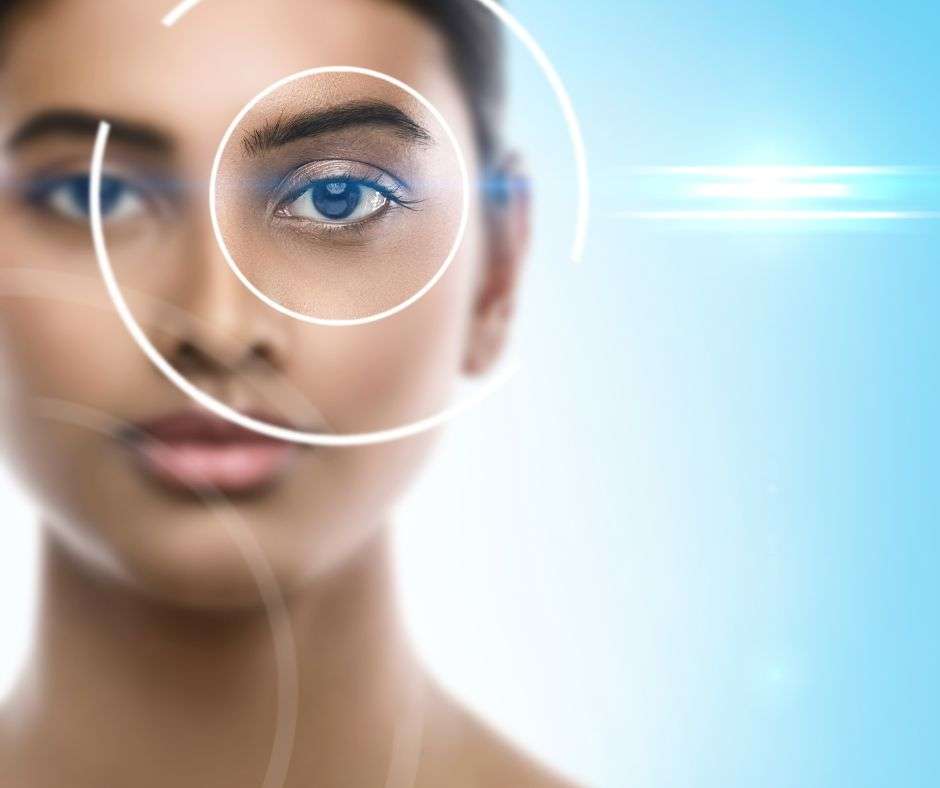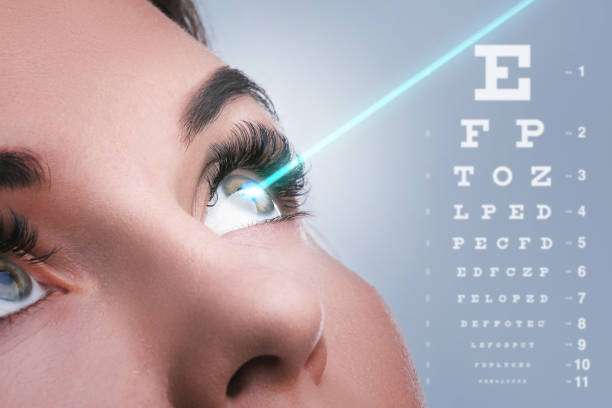Introduction:
Astigmatism is a common vision condition that affects millions of people worldwide. It is characterized by an irregular curvature of the cornea or lens, resulting in blurred or distorted vision. In this comprehensive article, we will delve into the intricacies of astigmatism, exploring astigmatism causes,Astigmatism symptoms, Astigmatism treatment and available options. So, if you’re looking to gain a deeper understanding of this eye condition, read on.
Meaning Of Astigmatism:
Astigmatism is a refractive error that affects the eye’s ability to focus light properly, leading to distorted vision at various distances. Unlike normal eyes, which have a spherical cornea and lens, individuals with astigmatism have a more oval-shaped cornea or lens.

Astigmatism causes:
- Irregular Cornea: The cornea, the clear front surface of the eye, is responsible for refracting light and directing it to the retina. In individuals, the cornea is not perfectly spherical but has an irregular shape. This uneven curvature prevents light rays from focusing properly on the retina, astigmatism causes leading to blurred or distorted vision.
- Abnormal Lens Shape: The lens, located behind the cornea, also plays a role in focusing light onto the retina. Any irregularity in the shape of the lens can cause astigmatism. This can occur due to factors such as genetic predisposition, trauma, or certain eye conditions.
- Hereditary Factors: its often has a hereditary component, meaning it can be passed down from parents to their children. If one or both parents have astigmatism, their offspring are more likely to develop the condition.
- Eye Injuries or Surgeries: Trauma to the eye, such as injuries or surgical procedures, can cause changes in the cornea’s shape, resulting in this. These changes may be temporary or permanent, depending on the severity of the injury or the surgical technique used.
- Keratoconus: Keratoconus is a progressive eye disorder that causes the cornea to thin and bulge forward, leading to this. This condition typically develops during adolescence or early adulthood and may require specialized treatment.
- Eye Diseases and Conditions: Certain eye conditions, such as corneal scarring, corneal dystrophy, or corneal infections, can cause astigmatism. These conditions affect the cornea’s shape and clarity, impairing its ability to refract light accurately.
Types of Astigmatism:
This can be classified into three main types based on the affected part of the eye: corneal astigmatism, lenticular astigmatism, and mixed astigmatism. Let’s explore each type in detail:
- Corneal Astigmatism: This is the most common type of astigmatism and occurs when the cornea has an irregular shape.
- The irregular curvature of the cornea, shaped more like a football or rugby ball rather than uniformly curved like a sphere, causes different meridians of the cornea to refract light differently, resulting in blurred or distorted vision at all distances.
- Lenticular Astigmatism: This occurs when the lens inside the eye has an irregular shape. The lens, located behind the cornea, helps to further focus light onto the retina. When the lens is asymmetrical, it leads to inconsistent refraction of light rays, resulting in astigmatism. Lenticular astigmatism is less common than corneal astigmatism but can occur alongside it.
- Mixed Astigmatism: This is a combination of corneal and lenticular astigmatism. In this type, both the cornea and lens contribute to the irregular refraction of light, causing blurred or distorted vision. Mixed astigmatism may require a more customized approach for vision correction due to the dual nature of the irregularities.
Consult Now call us: +917892492098 Click here
Symptoms of Astigmatism:
This can manifest with various symptoms related to visual impairment. The following are common symptoms experienced by individuals with astigmatism:
- Blurred Vision: Blurriness is a hallmark symptom of astigmatism. Objects at any distance may appear fuzzy or out of focus. This blurring occurs because the irregular shape of the cornea or lens prevents light from properly focusing on the retina, leading to distorted vision.
- Distorted or Warped Images: This can cause images to appear distorted or warped. Straight lines may appear wavy, curved, or tilted. This visual distortion can affect the perception of shapes and hinder tasks that require precise vision, such as reading or driving.
- Eyestrain: This often leads to eye fatigue and strain. Prolonged focusing efforts to compensate for blurry vision can result in tired, achy eyes. Eyestrain may be particularly noticeable after engaging in visually demanding activities or spending extended periods on digital screens.
- Headaches: This-induced eyestrain can trigger headaches, typically characterized by dull, persistent pain around the temples or forehead. Headaches may worsen as visual strain increases, such as during prolonged reading or screen time.
- Difficulty Seeing at Night: This can cause challenges with night vision. Individuals with this may experience increased difficulty seeing in low-light conditions, leading to decreased visibility, halos, or glare around light sources.
- Squinting: Squinting is a subconscious mechanism that people with astigmatism may employ to temporarily improve focus and reduce blur. Squinting helps to create a narrower aperture, thereby enhancing clarity by minimize the effect.
Treatment:
- Eyeglasses and Contact Lenses: Prescription eyeglasses are a common and non-invasive treatment for astigmatism. Specially designed lenses compensate for the irregular shape of the cornea or lens, correcting vision and providing clear focus. In addition, for correcting astigmatism, contact lenses, including toric lenses, are also available.
- Refractive Surgery: Refractive surgery offers a more permanent solution for astigmatism. LASIK (Laser-Assisted In Situ Keratomileusis) and PRK (Photorefractive Keratectomy) are popular surgical procedures. These surgeries use laser technology to reshape the cornea, correcting the irregular curvature that causes astigmatism.
- Orthokeratology (Ortho-K): Orthokeratology is a non-surgical option for astigmia that involves using specially designed rigid gas-permeable contact lenses. These lenses are worn overnight to temporarily reshape the cornea. Throughout the day, you can enjoy clear vision without the need for corrective lenses. Moreover, Ortho-K is particularly beneficial for individuals who prefer not to wear glasses or contacts during the day.
- Hybrid and Scleral Contact Lenses: Hybrid contact lenses combine a rigid center with a soft outer portion. They provide clear vision and increased comfort, making them suitable for individuals with this and other refractive errors. Scleral lenses are larger lenses that vault over the cornea, providing stable treatment of vision correction for individuals with irregular corneal shapes.
- Corneal Relaxing Incisions (LRI): LRI is a surgical procedure where tiny incisions are made in the cornea to reshape it. These incisions help to balance the curvature of the cornea and correct astigmia. LRI is typically performed in combination with cataract surgery or as a standalone procedure.
- Combination Approaches: In some cases, a combination of treatment approaches may be used to address astigmia. This could involve using eyeglasses or contact lenses for daily use and considering refractive surgery or Ortho-K for long-term correction.
Lifestyle Tips for Managing Astigmatism by vijayanethralaya expert doctors:
- Wear Corrective Eyewear
- Protect Your Eyes
- Maintain Good Hygiene:
- Take Regular Breaks:
- Stay Hydrated:
- Manage Stress Levels.
- Follow Proper Lighting
- Get Regular Eye Check-ups
Take the first step towards clear vision and improved eye health! Schedule a consultation with our expert doctors at VijayaNethralaya Eye Hospital today. Whether you’re considering eyeglasses, contact lenses, refractive surgery, or other treatment options, our team will provide personalized care and guidance to address your astigmia. Don’t let blurry vision hold you back. Click here to book your appointment now and embark on your journey towards better vision.
Book Your Appointement Now
Conclusion:
This is a common vision condition caused by an irregular shape of the cornea or lens. It can lead to blurred or distorted vision, eyestrain, headaches, and difficulty seeing at night. this can be classified into corneal astigmatism, lenticular astigmatism, or mixed astigmatism, depending on the affected part of the eye. also we can see the its causes, astigmatism symptoms, and available astigmatism treatment options.




